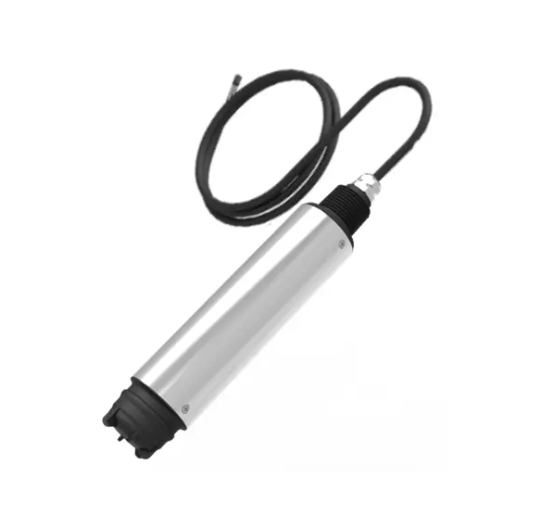Water quality monitoring is of paramount importance in various industries, including sewage treatment plants, water purification facilities, aquaculture, and industrial processes. The accurate measurement of dissolved oxygen (DO) is a critical aspect of this monitoring, as it serves as a key indicator of water quality. Traditional DO sensors have limitations, but with the advent of optical DO probes like the DOG-209FYD by Shanghai BOQU Instrument Co., Ltd., a new era of real-time data logging and reliable monitoring has dawned.
Optical DO Probes Revolutionize Water Quality Monitoring
Optical DO probes, also known as optical dissolved oxygen sensors, have revolutionized the way we monitor water quality. Unlike traditional electrochemical sensors, optical DO probes use fluorescence measurement to determine the concentration of dissolved oxygen. The principle behind this method is fascinating: blue light excites a phosphor layer, causing it to emit red light. The time it takes for the fluorescent substance to return to its ground state is inversely proportional to the concentration of oxygen. This unique approach provides several advantages over conventional sensors.
One of the primary advantages of optical DO probes is that they do not consume oxygen during the measurement process. This is a significant breakthrough, as it ensures that the measurement remains stable and reliable over time. Unlike electrochemical sensors, which can deplete the oxygen in the sample, optical DO probes maintain the integrity of the water being monitored.
Optical DO Probe Calibration: Tips and Tricks
Calibrating a DO probe is a crucial step in ensuring accurate measurements. The DOG-209FYD optical DO probe makes calibration a breeze with its user-friendly features. Calibration can be done in two ways: air automatic calibration and sample calibration. Air automatic calibration is a quick and straightforward method that uses the natural presence of oxygen in the air. Sample calibration, on the other hand, involves calibrating the probe with a known sample of water with a known DO concentration. Both methods are supported by the DOG-209FYD, providing flexibility for different applications.
The sensor’s calibration process is complemented by a maintenance prompt feature, allowing users to set customized prompts that are automatically triggered when maintenance is required. This proactive approach ensures that the probe remains in optimal working condition, minimizing downtime and enhancing data accuracy.
Technical Specifications
For those who crave the technical details, the DOG-209FYD doesn’t disappoint. Here are some of its key technical specifications:
1. Material: The body of the sensor is made of high-quality materials, including SUS316L + PVC (Limited Edition) or titanium (seawater version). The O-ring is made of Viton, and the cable is constructed from PVC.
2. Measuring Range: The DOG-209FYD can measure dissolved oxygen in the range of 0-20 mg/L or 0-20 ppm, along with temperature in the range of 0-45℃.
3. Measurement Accuracy: The sensor offers reliable measurements, with a dissolved oxygen accuracy of ±3% and a temperature accuracy of ±0.5℃.
4. Pressure Range: The sensor can handle pressures of up to 0.3Mpa, making it suitable for a variety of applications.
5. Output: It uses the MODBUS RS485 protocol for data transmission and communication.
6. Cable Length: The sensor comes with a 10m cable for easy installation and flexibility in setup.
7. Waterproof Rating: With an IP68/NEMA6P waterproof rating, the DOG-209FYD can withstand the elements and perform reliably in water.
Case Studies: Success Stories with Optical DO Probe
The real power of optical DO probes is demonstrated through their application in various industries. Here are a few case studies that highlight their success stories:
1. Sewage Treatment Plants: Optical DO probe plays a vital role in sewage treatment plants, where accurate DO measurements are essential for efficient and environmentally responsible wastewater treatment. These probes help optimize aeration processes, reducing energy consumption and operational costs.
2. Water Plants: In water treatment facilities, maintaining the right levels of dissolved oxygen is critical to ensure the quality of drinking water. Optical DO probes contribute to achieving this by providing reliable real-time data that guides water treatment processes.
3. Aquaculture: The aquaculture industry relies on optical DO probes to monitor and control oxygen levels in fish tanks and ponds. These probes help prevent fish mortality due to low oxygen levels and support optimal growth conditions.
4. Industrial Process Water Production: In industrial settings, the quality of process water can impact product quality and production efficiency. Optical DO probes assist in maintaining the desired DO levels in process water, contributing to consistent manufacturing outcomes.
5. Wastewater Treatment: Industries that generate wastewater as a byproduct use optical DO probes to monitor and manage the treatment of this wastewater. Accurate DO measurements are vital to meet environmental regulations and reduce the environmental impact of industrial processes.
Selecting the Right Optical DO Probe for Your Needs
When it comes to selecting the right optical DO probe for your specific needs, consider the following factors:
1. Application: Determine the primary application for the probe. Different probes may be optimized for sewage water, river water, aquaculture, or industrial processes. Select a model that aligns with your intended use.
2. Environmental Conditions: Consider the environmental conditions in which the probe will operate. Ensure that the probe’s material and design are suitable for the temperature, pressure, and moisture levels it will encounter.
3. Measurement Range: Choose a probe with a measurement range that covers the expected variations in dissolved oxygen levels in your application. This ensures that you can capture accurate data across a wide spectrum of conditions.
4. Accuracy and Precision: Look for a probe with high accuracy and precision, as this is crucial for data reliability. The DOG-209FYD, with its low margin of error, is a prime example of a highly accurate probe.
5. Integration Capabilities: Consider how the probe will integrate with your existing monitoring and control systems. The MODBUS RS485 output is a valuable feature for seamless integration.
6. Ease of Maintenance: Evaluate the maintenance requirements of the probe. Optical DO probes like the DOG-209FYD, with minimal maintenance needs, can save you time and resources in the long run.
7. Durability and Longevity: Choose a probe with a robust design that can withstand the demands of your specific application. Durability ensures a longer service life and fewer replacements.
Conclusion
In conclusion, optical DO probe like the DOG-209FYD by Shanghai BOQU Instrument Co., Ltd., has redefined water quality monitoring. With their innovative fluorescence measurement technology, minimal maintenance requirements, and user-friendly features, these probes offer a reliable and efficient solution for real-time data logging. Whether you’re in the field of sewage treatment, aquaculture, or water purification, the DOG-209FYD is a game-changer that simplifies the monitoring process and ensures the quality of water remains at its best.
Post time: Nov-08-2023





